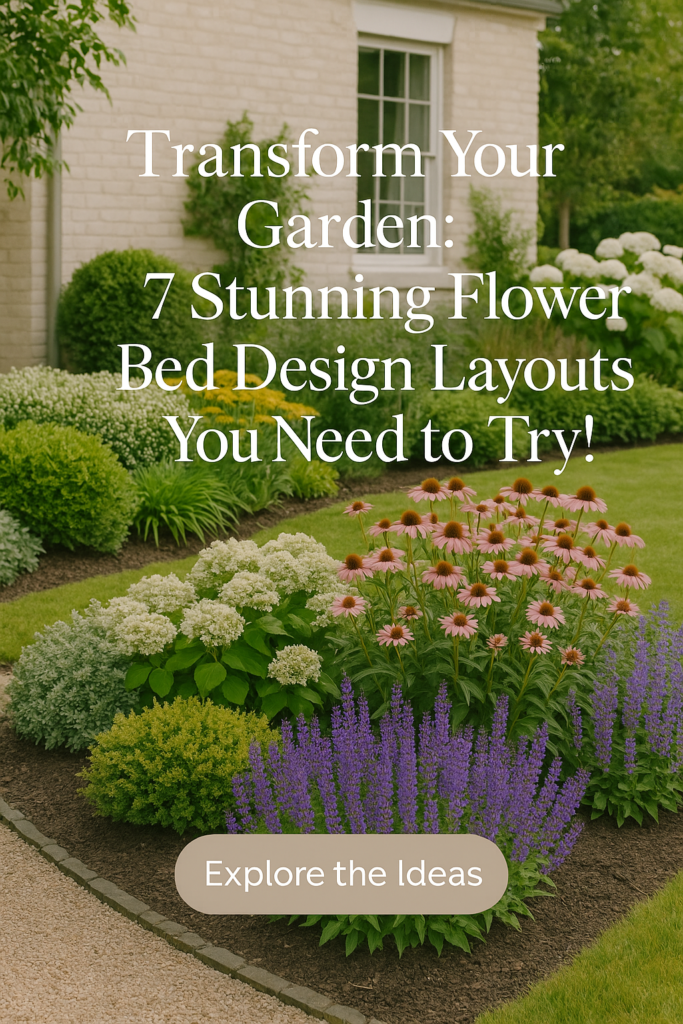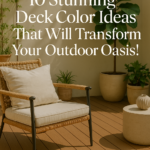
Embracing Flower Bed Designs Layout: A Comprehensive Guide
The allure of flower beds is undeniable, bringing a splash of color, texture, and life to any outdoor space. Whether you’re looking to enhance your garden, patio, or yard, the right flower bed design can transform your environment into a stunning oasis. In this guide, we’ll explore various layouts, practical tips, and inspiring ideas to help you create the perfect flower bed.
Why Flower Bed Designs Matter
Before we dive into the layouts, let’s discuss why flower bed designs are essential for your landscape:
– Visual Appeal: A well-designed flower bed can serve as a focal point in your garden.
– Biodiversity: Flower beds attract pollinators, contributing to a healthier ecosystem.
– Personal Expression: Your flower bed can reflect your personality and style.
Key Elements to Consider
1. Location and Sunlight
Before planting, assess your space:
– Full Sun: Choose spots that receive at least 6-8 hours of sunlight for sun-loving plants.
– Part Shade: Ideal for plants that thrive in dappled light.
– Full Shade: Opt for shade-tolerant species if sunlight is limited.
2. Soil Quality
Healthy soil is the foundation of any flower bed:
– Test Your Soil: Check pH levels and nutrient content.
– Amend as Needed: Incorporate compost or organic matter to enrich the soil.
3. Design Layouts
Now, let’s explore popular flower bed designs layouts that can elevate your garden aesthetic.
Top Flower Bed Designs Layouts
1. Formal Gardens
A formal layout is characterized by geometric shapes and symmetry.
– Key Features: Straight lines, evenly spaced plants, and balanced proportions.
– Plants: Use boxwoods, roses, and other structured plants for a clean look.
2. Cottage Gardens
Cottage gardens exude a charming, whimsical vibe.
– Characteristics: Dense planting, a variety of heights, and a mix of colors and textures.
– Best Plants: Consider daisies, foxgloves, and lavender for a romantic feel.
3. Raised Beds
Raised flower beds not only add dimension but also improve drainage.
– Benefits: Easier access for maintenance and a defined planting area.
– Materials: Use wood, stone, or bricks to create the structure.
4. Curved Lines
Soft, flowing lines create a natural look.
– Design Tip: Draw curves to mimic nature and make your garden feel more expansive.
– Plants: Incorporate plants of varying heights and colors to enhance the flow.
5. Rock Gardens
Ideal for sloped areas, rock gardens combine flora with natural stones.
– Key Aspects: Use drought-tolerant plants like succulents and alpine species.
– Visual Appeal: Rocks add texture and interest throughout the seasons.
6. Container Gardens
Perfect for small spaces or patios, container gardens provide flexibility.
– What to Use: Utilize pots, barrels, or window boxes.
– Plant Selection: Choose a mix of annuals and perennials for continuous blooms.
7. Wildflower Meadows
For a low-maintenance option, consider a wildflower meadow.
– Benefits: Attracts bees and butterflies while requiring less upkeep.
– Seeds: Look for native wildflower seed mixes for a local touch.
Practical Tips for Designing Your Flower Bed
1. Plan Your Layout
– Sketch It Out: Before planting, create a simple sketch of your desired layout.
– Consider Seasonal Changes: Plan for year-round interest with a mix of blooming times.
2. Choose the Right Plants
– Diversity is Key: Select a variety of plants to ensure continuous blooms and a vibrant display.
– Height Matters: Place taller plants at the back (or center, in an island bed) and shorter ones in front.
3. Incorporate Pathways
– Easy Access: Create pathways using gravel, mulch, or stepping stones for easy maintenance.
– Visual Interest: Curved pathways can enhance the organic feel of your design.
4. Add Focal Points
– Structures: Consider adding a trellis, birdbath, or sculpture to draw the eye.
– Color Blocks: Use contrasting colors or a monochromatic palette for striking effects.
Inspiration and Resources
1. Pinterest Boards
Explore Pinterest for a wealth of images and ideas. Create a dedicated board for your flower bed inspiration and pin your favorite designs.
2. Local Nurseries
Visit local nurseries for expert advice on plants suited to your climate and soil type. Speak to staff about your design ideas and get recommendations tailored to your vision.
3. Online Communities
Join gardening forums and social media groups to share your progress and seek advice from fellow enthusiasts.
Conclusion: Cultivating Your Dream Flower Bed
Designing a flower bed is a rewarding endeavor that not only beautifies your space but also fosters a connection with nature. By understanding the various layouts and applying practical design tips, you can create a stunning flower bed that reflects your personal style and enhances your outdoor living experience.
So gather your materials, unleash your creativity, and watch as your dream flower bed blossoms into reality! Happy gardening! 🌼


